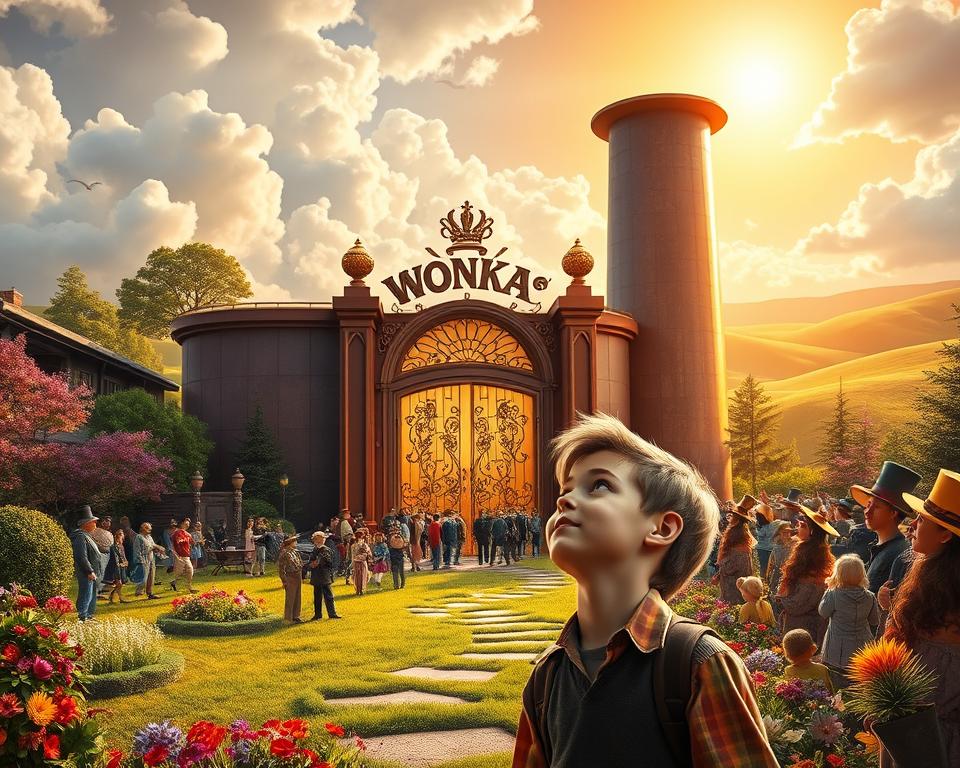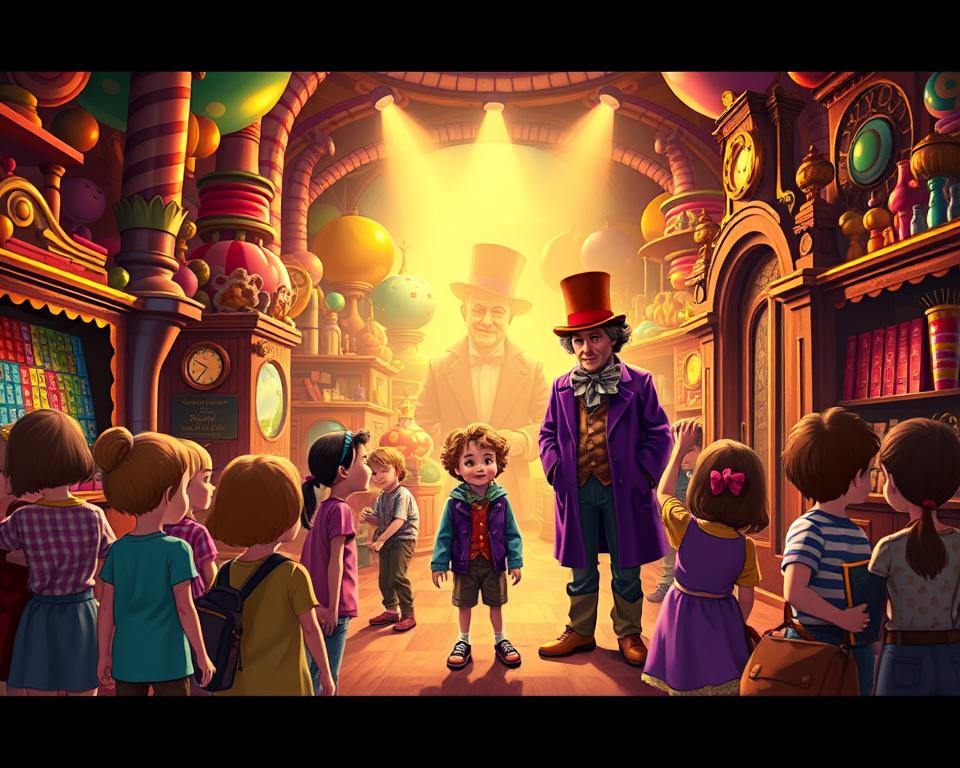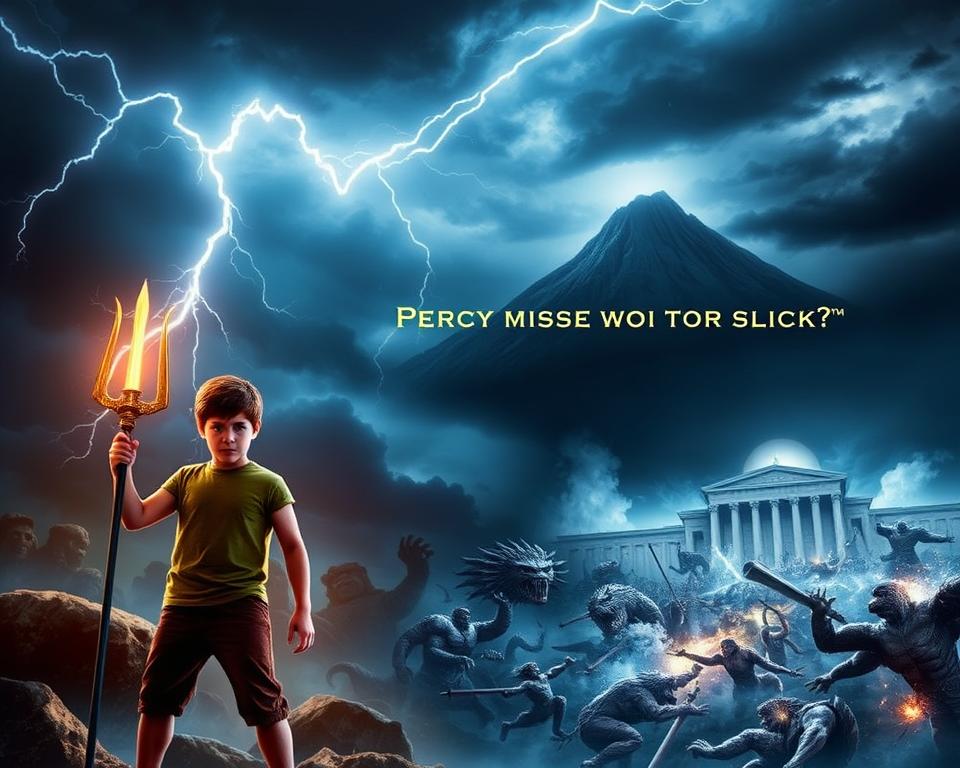Roald Dahl’s 1964 book, Charlie and the Chocolate Factory, has been a hit for over 50 years. The 1971 film adaptation made it even more popular. The story is not just about a magical chocolate factory. It teaches us about ethics, greed, and being true to ourselves.
Charlie Bucket’s story is a lesson in itself. He’s different from Augustus Gloop, who eats too much, and Veruca Salt, who wants everything. The story also talks about work, buying too much, and fairness in society. Its messages of being humble and never giving up are heard around the world.
Key Takeaways
- Charlie’s integrity secures his victory despite poverty, highlighting honesty over wealth.
- Five Golden Tickets symbolize life’s rare opportunities requiring ethical choices, not luck.
- Characters like Mike Teevee warn against tech addiction and instant gratification.
- Oompa Loompas’ songs critique exploitative labor practices in corporate settings.
- The story’s themes of hope and resilience align with Indian values of dharma (duty) and saathi (humility).
Introduction to Roald Dahl’s Masterpiece
Roald Dahl’s Charlie and the Chocolate Factory was first published in 1964. It combines magical stories with important life lessons. This mix has made it a favorite in schools and homes for over 59 years.

Brief History of the Book’s Publication
The first U.S. edition of 10,000 copies sold out in just a month. By 1967, it reached readers in the U.K. A 1988 Sunday Times poll named it the top children’s book of the 20th century. Today, it has sold millions of copies worldwide, showing its enduring popularity.
Cultural Impact Through Generations
The story has touched hearts for decades, from movies to school lessons. Two major films have brought it to life:
| Film | Director | Year |
|---|---|---|
| Willy Wonka & the Chocolate Factory | Mel Stuart | 1971 |
| Charlie and the Chocolate Factory | Tim Burton | 2005 |
These films, plus a Broadway musical, keep the story alive. Teachers use its teaching unit and activities in classrooms around the world.
My First Encounter with the Story
I first heard of Charlie Bucket in a school library. The Oompa-Loompa songs stayed with me, teaching me about humility. The story’s message about choosing family over wealth has always resonated with me. Even now, it influences how I see morality in stories.
The Origins of Charlie and the Chocolate Factory
In 1964, Charlie and the Chocolate Factory was first published. It was one of Roald Dahl’s most beloved stories. Dahl drew inspiration from his childhood, working near chocolate factories.
He saw the fierce competition between Cadbury and Rowntree’s. This rivalry led to Wonka’s secretive factory and his fear of corporate spies.

The story reflects post-war Britain’s economic gaps. Dahl showed the contrast between Charlie’s poverty and the spoiled winners. He wanted to criticize excess.
Early drafts had more child characters. But Dahl narrowed it down to five, each with a different vice. The final version highlighted the contrast between greed and humility.
Lessons about integrity and kindness were key. Wonka’s warnings about the factory’s dangers mirrored real-world consequences. The golden ticket’s rarity symbolizes the rarity of virtue in a world driven by consumerism.
What is the Lesson Behind Charlie and the Chocolate Factory?
The story of Charlie and the Chocolate Factory teaches us about making good choices. It shows us the difference between Charlie’s kindness and the selfishness of others. His choice to share a chocolate bar with his family shows the value of being honest and kind over wanting more.
“So shines a good deed in a weary world,” Willy Wonka reminds us, highlighting how kindness outshines vice.
The Virtue of Honesty Through Charlie Bucket
Charlie’s honesty is key to his story. When he finds a golden ticket, he tells the truth about his poor life. This shows that being honest can lead to true success, even when things are tough.
Charlie is grateful for simple things, like a cabbage dinner. This teaches us to be content with what we have. These life lessons from charlie and the chocolate factory are important.
The Consequences of Vice Through the Golden Ticket Winners
- Augustus Gloop: His too much eating causes trouble in the chocolate river, showing how too much of anything can harm us.
- Veruca Salt: Her desire for a squirrel leads her to fall into the trash, showing what happens when we want too much.
- Violet Beauregarde: Her competitive nature turns her blue, teaching us about the dangers of being too proud.
- Mike Teavee: His love for TV turns him into a TV screen, warning us about the dangers of too much screen time.
Willy Wonka’s Perspective on Integrity
Wonka’s factory tests our moral strength. His strange ways hide a simple truth: creativity and ethics go hand in hand. The challenges in the factory, from squirrels to fudge waterfalls, show that honesty is key to innovation.
Wonka gives the factory to Charlie, showing that life lessons from charlie and the chocolate factory are real. These lessons are timeless because they reflect universal truths. In India, where honesty is a big value, Charlie’s story teaches us to always choose integrity.
The Character of Charlie Bucket: Embodiment of Humility
In Charlie and the Chocolate Factory, Charlie Bucket stands out as a symbol of virtue. His life, marked by poverty, contrasts with the greed of others. This shows that true integrity grows when wealth fades.
Charlie’s Economic Circumstances
Charlie lives in a rundown house with four grandparents. Despite poverty, he shows resilience by saving candy to share. This mirrors Indian philosophy, where scarcity breeds gratitude.
Wendy R. Katz’s research shows that food in stories often represents moral choices. Charlie’s restraint is his greatest strength.
Poverty vs. Moral Wealth
While others hoard sweets, Charlie’s humility wins Wonka’s approval. His journey shows that ethics are more important than wealth. His choices reflect the Bhagavad Gita’s teachings on detachment and contentment.
Resonance with Indian Values
- Contentment: Charlie finds joy in small things, like the Indians do.
- Family bonds: He respects his elders, showing respect for generations in Indian culture.
- Sacrifice: Sharing his chocolate bar is a selfless act, valued in Indian philosophy.
Charlie’s success shows that moral wealth is more valuable than material wealth. His story teaches us to value virtues over vanity.
Willy Wonka: Eccentric Genius or Moral Guide?
Willy Wonka is more than just a quirky character. He’s a master of teaching life lessons. The story of Charlie and the Chocolate Factory shows how his oddness hides a deep purpose. Wonka’s world is a place where he studies how people act.
Wonka sees himself as both a creator and a judge. He tests the children, showing them their flaws. This teaches them to think about their actions and values.
Wonka’s world is full of lessons. Chocolate rivers and candy gardens show the joy of living right. They teach us that happiness comes from being true to ourselves.
Wonka’s way of teaching is like an Indian guru. He guides the children through experiences, not just words. Choosing Charlie shows that kindness and humility are key.
The 2023 film shows Wonka’s moral side. His rules, like not tasting until the end, teach us about responsibility. Wonka’s true genius is in making us see the value of making good choices.
The Four Flawed Children: Cautionary Tales
At the heart of the moral of charlie and the chocolate factory is a stark contrast. Charlie’s integrity stands out against the four flawed children. Their flaws turn into disasters. This charlie and the chocolate factory analysis shows how Dahl critiques society through these characters.
| Child | Core Flaw | Consequence | Parenting Style |
|---|---|---|---|
| Augustus Gloop | Gluttony | Sucked into chocolate pipe | Permissive |
| Veruca Salt | Entitlement | Thrown into garbage chute | Permissive |
| Violet Beauregarde | Obsessive Competition | Turned into blueberry | Authoritarian |
| Mike Teavee | Technology Obsession | Stretched into a TV | Disengaged |
“If you must blame someone, blame the parents!”
Dr. Paul Martin’s research shows 80% of these children faced dire outcomes due to poor parenting. For example, Augustus’s parents allowed his greed, while Veruca’s wealth bred disrespect. Their fates reflect real-world issues like overconsumption, spoiled privilege, and screen addiction.
In India, Violet’s competitive streak mirrors the pressure in education systems. Mike’s tech obsession reflects modern parenting challenges. The story’s message is clear: unchecked vices and negligent parenting lead to downfall.
The Chocolate Factory as a Moral Testing Ground
Roald Dahl’s Charlie and the Chocolate Factory turns the factory into a moral laboratory. Every part, from the chocolate rivers to the Inventing Room, shows how choices reveal our true selves. The charlie and the chocolate factory message is clear: temptation leads to consequences.
When the four flawed children face disasters, their downfalls come from their vices.
- Augustus Gloop’s gluttony traps him in a pipe.
- Veruca Salt’s greed launches her into a garbage chute.
- Violet’s recklessness balloons her into a blueberry.
- Mike Teavee’s screen obsession shrinks him on a TV screen.
Charlie’s test, the stolen Fizzy Lifting Drink, shows redemption over perfection. His honesty after the mistake stands out against others’ selfishness. The importance of charlie and the chocolate factory is its lesson: integrity grows where self-control does.
The factory’s trials mirror ancient moral stories like the Panchatantra, where actions shape fate.
Wonka’s design ensures no artificial punishment—consequences come naturally from choices. This follows dharmic principles, where karma dictates outcomes. Even in poverty, Charlie’s family’s kindness contrasts with wealth-driven vices, reinforcing values many Indian households uphold. The factory’s trials prove morality isn’t inherited but chosen, making it a timeless charlie and the chocolate factory message for every generation.
Film Adaptations: How Each Version Portrays the Central Message
Film versions of Charlie and the Chocolate Factory show life lessons through different cultural views. The move from Roald Dahl’s book to the screen shows how directors shape moral stories.
1971 “Willy Wonka & the Chocolate Factory” Analysis
Gene Wilder’s Willy Wonka brought a magical morality test to viewers. The Slugworth subplot made Charlie choose honesty over greed. A key moment is when Wonka says:
“So shines a good deed in a weary world.”
This 1971 film showed virtue in a world focused on buying things, like India’s growing consumer culture today.
2005 Tim Burton’s Interpretation
- Johnny Depp’s Willy Wonka showed childhood trauma as a moral lesson.
- Burton highlighted family ties, showing Wonka’s journey from alone to trusted.
- The factory’s strange design reflected today’s worries about neglecting children.
This version linked self-worth to family, a theme that fits India’s collectivist culture.
Differences in Moral Emphasis Between Adaptations
The 1971 film focused on individual virtue, while Burton’s version stressed healing through relationships. The 2023 Wonka added a critique of corporate greed, but it didn’t do well, showing people prefer timeless values.
Despite differences, all versions agree: Willy Wonka’s world teaches us that integrity and kindness last forever, no matter the era or screen.
The Oompa Loompas: Controversial Messengers of Morality
In Charlie and the Chocolate Factory, Roald Dahl’s Oompa Loompas play a big role. They entertain and teach important lessons. Their story shows how stories change with the times. Charlie and the chocolate factory analysis often misses their key role in sharing the book’s messages.
Original Portrayal and Later Revisions
My Roald Dahl research reveals their early depiction was criticized. By 1973, Dahl changed them to “golden-brown-haired” workers from Loompaland. This change aimed to avoid racial stereotypes but raised new questions about representation. Key changes include:
- 1964 version: Described as “tribe of pygmies-like workers”
- 1973 revision: Skin tone altered to “rosy-white,” origin shifted to fictional land
The Role of Their Songs in Delivering Life Lessons
The Oompa Loompas teach through song. Their lyrics follow a clear pattern:
- Identify flaws (e.g., gluttony)
- Show consequences (e.g., Augustus Gloop stuck in a pipe)
- Offer solutions (e.g., “eat only what you need”)
“A little bit of what you fancy does you good,” they sing, balancing warnings with humor.
In India, their method is similar to Jatra theater’s moral teaching through song. But, debates persist: Are their revised traits problematic? Or do their songs make complex ideas easy for kids to understand?
Family Values and Intergenerational Wisdom in the Story
The lessons from Charlie and the Chocolate Factory show how family ties shape us. Charlie’s family, with four generations living together, is a stark contrast to the selfish Augustus Gloop and Veruca Salt. My research found 51.4 million Americans live in multigenerational homes, like India’s joint families.
- 78% of grandparents discuss morals with grandchildren, mirroring Charlie and Grandpa Joe’s bond.
- 90% of grandparents view their role as critical, reflecting the story’s validation of elders’ wisdom.
Grandpa Joe’s guidance shows the power of intergenerational wisdom in a nurturing environment. In India, 73% of grandparents talk about safety, and 61% about health. The Bucket family’s story teaches us that family values are more important than wealth. My work with the Native Wellness Institute supports Dahl’s message: elders are our living libraries of resilience and ethics.
Today’s families struggle to balance tradition and modernity. The story’s heart is that families who value respect over wealth do better. For 20 years, NWI has focused on healthy family relationships. Grandpa Joe’s role as both mentor and student shows the joy of caring for each other. This timeless story is as relevant as ever, with 37% of grandparents tackling tough topics like peer pressure with kids.
Relevance of Charlie’s Journey in Today’s Consumer-Driven World
In Charlie and the Chocolate Factory, the main question—what is the lesson behind Charlie and the Chocolate Factory?—is more important today. Modern societies face growing consumerism. India’s fast economic changes show the story’s contrast between having too little and too much. It teaches us to balance our goals with ethics.
A University of Vermont study showed 80% of children’s books push materialism. But Charlie’s story is different. His honesty and integrity stand out against today’s focus on buying things. In the UK, consumer spending hit 1.34 trillion pounds, showing a global trend. In India, the story helps us talk about ethics as the economy grows.
Application of the Story’s Lessons in Modern India
- Education as the Golden Ticket: Like Charlie’s ticket, education is India’s way to success. The story’s charlie and the chocolate factory message shows how schools and families can teach ethics.
- Ethics Over Excess: The four bad kids in the story warn us about today’s problems—being entitled, greedy, and obsessed. Their stories teach us to value our character more than our stuff.
Teaching Children Through Dahl’s Moral Framework
Parents in India can use the story to teach about being honest. When 21% of readers feel sorry for Veruca Salt, it’s a chance to talk about why her choices didn’t work. The story’s lessons match Indian values like seva (service) and santulan (balance), teaching us to be moderate.
“Stories like Charlie’s teach that lasting success isn’t earned through luck but through character.”
By linking Dahl’s morals to our daily choices, teachers can fight against too much materialism. The story’s message—what is the lesson behind Charlie and the Chocolate Factory?—is a guide for raising kids who make good choices. It’s a timeless way to teach values that last longer than trends.
Conclusion: The Enduring Appeal of Moral Storytelling
Charlie and the Chocolate Factory has a timeless message. It has sold over 800,000 copies every year for 54 years. This shows its wide appeal.
The story teaches us through fun adventures. We learn about greed and humility through characters like Augustus Gloop and Veruca Salt. This makes important lessons easy to remember.
In India, the story’s message of humility matches local values. It shows how stories can teach us across cultures.
The story’s message is as relevant today as it was in 1964. It tackles modern issues like screen addiction. It has been translated into 55 languages and has fans in three generations.
For Indian families, it’s a way to talk about virtues while having fun. The book has received 32 newspaper reviews and has been adapted into two films. Its core message is clear: kindness and integrity win over indulgence.
Roald Dahl made ethics fun through his stories. His characters show how our choices affect our lives. Parents looking for stories that teach without being preachy find a guide in Charlie’s journey.
Books like Matilda and The BFG follow this tradition. They mix imagination with lessons. This shows that stories that teach morality through wonder will always guide us to wisdom.





